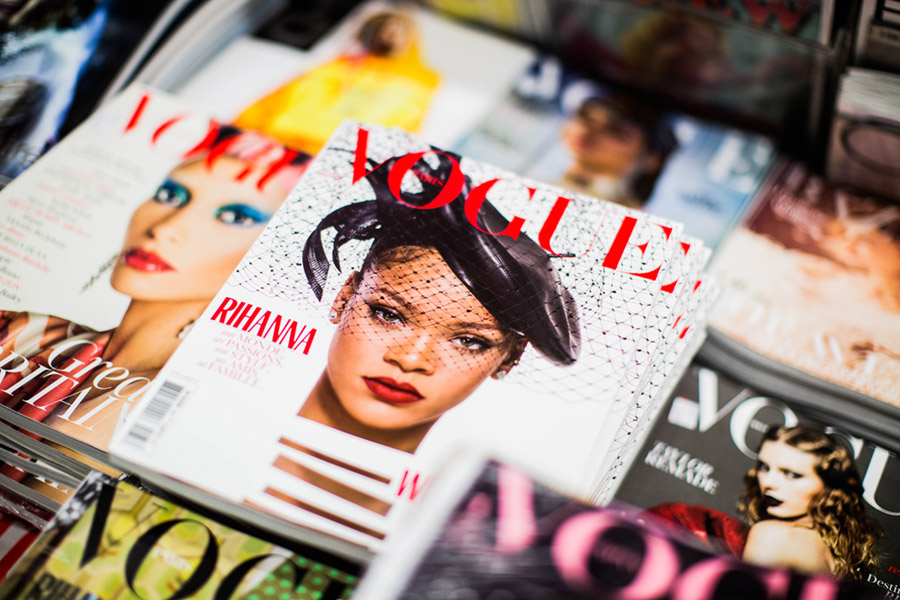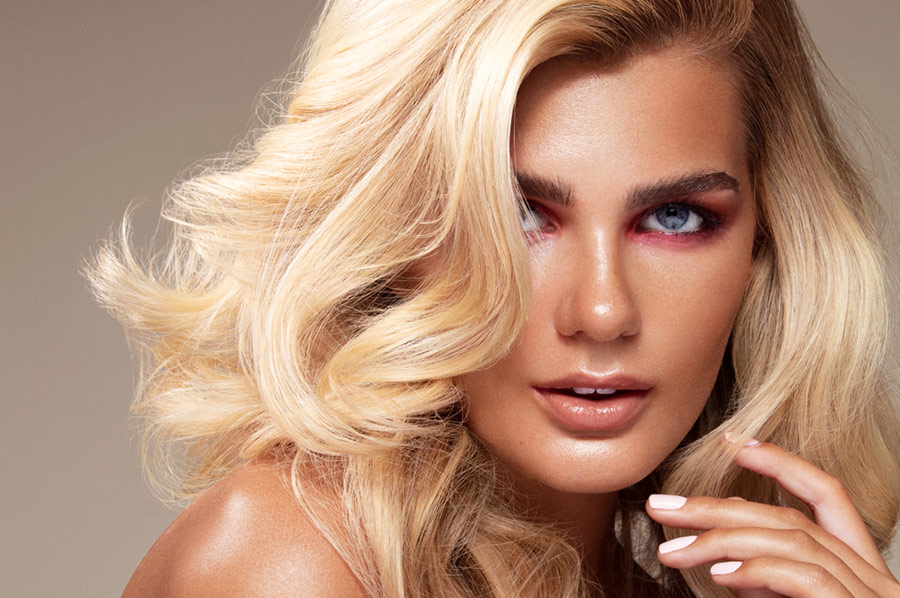Editorials are a hot commodity when it comes to photographers and other artists looking to showcase their work to potential clients. While in the past, a photographer could expect to be compensated for their work, 2019 is a very different world.
Now, digital publications and print-on-demand magazines are numerous, with new ones popping up regularly, while others suddenly vanish without a trace. I’ve previously reported on this topic regarding the problematic trend of magazines charging for submissions (which is still problematic, by the way), but today I am going to hone in on one particular issue: exclusivity.
What Is Exclusivity?
Exclusivity is when a publication or media outlet requires that whatever editorial/images that you are providing to them are for them only. It’s an embargo on your work, often stating that you are not allowed to post the images anywhere until the magazine is out. While this may seem reasonable to some, the issue is compounded when that exclusivity lingers.
And let’s also not forget the fact that they aren’t paying for the images that photographers carry all of the production costs for.
One of the main purposes for creating editorials and getting them published for photographers and their teams is to get as much exposure as possible. This is in the hopes of consequently getting on the radar of potential clients, making new connections, and landing desired jobs. An exclusivity requirement is limiting or delaying that exposure and effectively robbing photographers of not only licensing fees but also of wider reach and potential jobs.
For the magazines, on the contrary, it’s a very convenient requirement. It allows those magazines to continue publishing exclusive content that they are not paying for, use it to grow their social media following, and as a result continue growing their sales and influence.

Source: Unsplash
How The Magazines Label Exclusivity
Below we are going to examine the language used by publications for their exclusivity clauses.
“Once an image is accepted to be published, it grants us the permission to use your work in any of our publications, websites, videos, marketing pieces, advertisements, and any other mediums or formats used in the creation, dissemination, and monetization of [The Magazine.]“
While this is somewhat standard practice on the outside, as an artist, you want to be careful with the language that gives carte blanche rights to the magazine. If you aren’t getting paid (or worse, you paid them), you owe the magazine nothing, least of all the ability to use your work to promote their business.
“Photos from a photo shoot must not have been published on any other publication’s magazine, website, blog or social media and must not do so after we publish the editorial. All editorials must be exclusive to [The Magazine.]“
So let’s get this straight. This magazine not only wants to embargo the images before they get a chance to break the story first, but they also want to own them after the fact. If another, larger magazine comes around, or even just a social media feature account like us with @retouchingacademy, that opportunity is lost to you.
RELATED: What’s Wrong With Magazines Charging Their Contributors For Submissions
There needs to be something of value provided to you in lieu of compensation. Exposure is just about the only one that matters, because while tearsheets might look nice in your portfolio, if they’re not from a recognizable magazine then they’re as valuable as designing them yourself in InDesign.
That said, know precisely how this magazine is going to promote your story. Will they share a single post on their Instagram? Is their magazine free to view or are the only viewers just going to be the other contributors who pay to see it? Does their account get much higher engagement than your own? If the answers don’t satisfy, find another magazine (this won’t be hard, there are hundreds listed on Kavyar alone).
Do not sell yourself short. If you have produced a high-quality editorial, you should avoid exclusivity clauses like this. You may be shooting yourself in the foot by granting a small publication exclusivity rights when a much better opportunity could be around the corner.
“Please note that we do not pay for your editorials as we are a small magazine and do not have the budget to do so at the moment.“
Get ready to see this more and more. Many of these online publications do not pay for editorials, yet this particular publication charges for submissions. Their submission fees range from $6-$10, while they offer guaranteed publishing for over $200, and have their cover stories for sale at a price tag of $800.
If a magazine offers guaranteed publication or paid-for covers, run!
Serious clients and art buyers are not going to be paying to read these multi-issue volumes on MagCloud. Your only chance of being seen is if you are properly credited and tagged in their social media accounts, and their following had better be worthwhile.
Regardless, there are many options for showcasing your work that doesn’t consist of these dishonest rights grabs, nor for your only paying audience to be your own competition.

Source: Unsplash
What Are Your Rights?
If you are the photographer, you by default own the copyright to the images in question.
The magazine needs to have you sign a full release or an agreement giving them permission to publish your work. Unless you specifically sign over your copyright to them, you are the sole owner of the photographs you have created and the only decision-maker as to where and when your work can be published.
If another publication or an Instagram account with a larger following and higher engagement level shares your images – it is wonderful for you and your work. But the magazine may get up in arms about it. However, legally, they have no leg to stand on in terms of demanding a third-party remove the images.
It is the sole right of the copyright owner to decide whether or not you allow anyone to share your work and bring you more exposure, new followers, and hopefully new clients.
The Bottom Line
No editorial is free. The photographer uses their expensive equipment, rents a studio and invests time and/or money into post-production; the makeup artist and hairstylist use their consumable products during each shoot; the models invest their time, and the wardrobe stylists often have to put money upfront for their pulls (especially without a pull letter from a reputable publication) – and that’s just scratching the surface of the production team.
Getting the biggest ROI (return on investment) from each beauty or fashion story you produce means allowing it to be published in as many places that you approve of as possible. If you have created this editorial for a tearsheet, then you need to aim high and ensure that you and your team benefit from more than perceived bragging rights for “getting published.”
Your work is worth much more than that.
Featured Image – Photographer: Kendra Paige | Model: Stephanie M Peterson @ Wilhelmina Miami | HMUA: Jude Andam @ Agency Gerard | Retoucher: Sonya Alt





The more time I work with print on demand magazines, the more disappointment it brings to me. Even if they have more than 100K followers on insta and the mag makes “promotion” of my editorial, I don’t gain a lot of followers.
But the most disappointing thing is that they sometimes truly don’t respect the photographer and team, they make you wait a lot for tear-sheets, never answer on time, call you rude because you sent a lot of messages and after some of them say “you should to buy digital version and then we will send you the tear sheets.” I’d rather not make editorials, than be put down on my knees and beg for the magazine. It’s very nice article, hope a lot of photographers will think a lot after reading this.
Thank you, Olga! I definitely agree with you. I think part of the issue is just how massive Instagram itself has become. Being posted on accounts with a large following doesn’t always mean it will be beneficial, because either their engagement is very low in comparison to their following, or people just don’t click on tags like they once did.
But publications do not exist without content creators, period. So hopefully more will show that have found a way to include advertisements / advertorials, while not preying on the rights of their contributors.
I checked out and signed up for Kavyar. the ones i looked at asked for money for submissions. I’m confused as this article says you shouldn’t pay but then promote a site that asks for payment. I am not attacking just looking for clarification because I am new to all this.
Thanks,
Loved the article!
I referenced Kavyar primarily because it’s become somewhat of an industry standard for people trying to “get their work published.” But as you’re seeing firsthand, most of these publications want you to pay for it, which is absurd.
Great article!
I’m an artist who recently ran into this problem while trying to submit my work on kavyar. My work was accepted by Mob Journal (free submission of course) and I ended up receiving a message from them asking if I wanted to buy a front cover spot because they “loved my work”. They said it was originally $400 but they were giving me a discount for around $100……. Disrespectful
I’ve started my own instagram blog since then, promoting emerging artists and inspirational fashion photography. I’ll soon be releasing quarterly magazines showcasing emerging artists as well. My main goal is to offer a high quality platform that does not charge artists for their work and actually appreciates them! From one artist to another (:
I guess good things always come out of the bad!
Great initiative, Katherine!
Keep it up and please contact us if we can help with a shoutout or something!